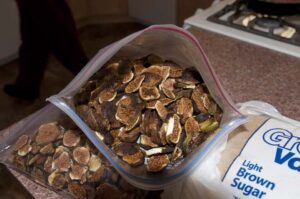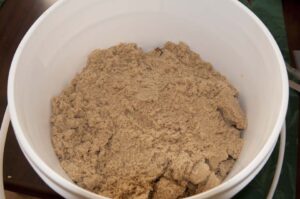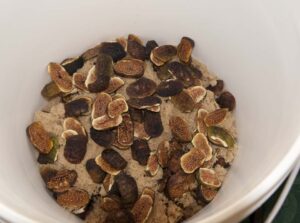We have a large fig tree in our back yard. For the amount of space and the limited care it takes, it produces way more fruit than any other fruit tree of which I am aware. It will produce two crops every year. The first crop develops in the spring on last year’s shoot growth. The main fig crop develops on the current year’s shoot growth and ripens in the late summer or fall. The main crop is generally superior in both quantity and quality to first crop.
Fig trees can be raised in many different parts of the world, depending on which variety you grow. Mountain fig or rock fig is a wild fig that grows in the semi-arid rocky mountainous regions of Iran. The only difference between the mountain fig and other figs is its tolerance of dry and cold climates. It usually does not need any irrigation and is able to survive extremely dry weather and temperatures of −40 °F.

Figs are good healthy food containing amongst other nutrients potassium, a mineral that is believed to help control blood pressure. Figs are also a good source of iron, magnesium, potassium, B vitamins, as well as vitamin K.
The leaves of the fig tree are also edible. They are used similar to grape leafs. The leaves of the fig have been shown to have some antidiabetic properties and can actually reduce the amount of insulin needed by some people. Here is what WebMD has to say on the subject.
But aside from all that I eat figs because I like the taste and they seem to agree with me. Every year we dry figs and preserve them. First, we dry them either with our Excalibur Dehydrator or on our outdoor drying racks. Cutting them in half helps them dry fast and better. Make sure they are completely dry prior to storage or they will mold.
You should store them in a cool dry area protected from insects. If you want, you can get a bit fancy. We have made these on occasion and they are very good, like candy. Take a food grade plastic bucket and put a thin layer of brown sugar and then a layer of dry figs. Alternate the layers until the bucket is full and then put the lid on and store in a cool dry area. When you take the figs out, save the sugar for next year. We have keep figs for several years stored like this.


You can eat them directly from the bucket or you can rehydrate them and use them in cooking. Figs are a great food to store.
Howard


Thanks for the tip with sugar. Our fig tree is only 2 years old; but one day I hope to need this tip!
I have two types of Fig Trees, my Brown Turkey gives me two growths as you stated. But winter before last it died back to the ground due to an extremely cold winter here in Zone 7. So, this past winter we surrounded it with Straw (hubby surrounded it with bamboo pole and strong and we stuffed it. As it began to sink we added more. Even so, it still died back; another extreme winter here. Last season we received no figs on this tree as it seemed to put all of it’s energy into the new growth. We did not shape it like a tree but left it to grow like a bush. Could that be why?
I also have a Chicago Hardy… it always dies back but gives me plenty at Harvest time. We have always allowed this one to be a bush as when it first died back that is how it came back and it gave us fruit. We covered this one with straw too… but it still died back.
We did not need to add extra straw as my hubby left leaves from the bamboo on the poles and that seemed to keep the straw from shrinking.
Have never dried them… will give that a try and love the idea of the sugar. I have canned mine whole with a syrup instead. Works well…